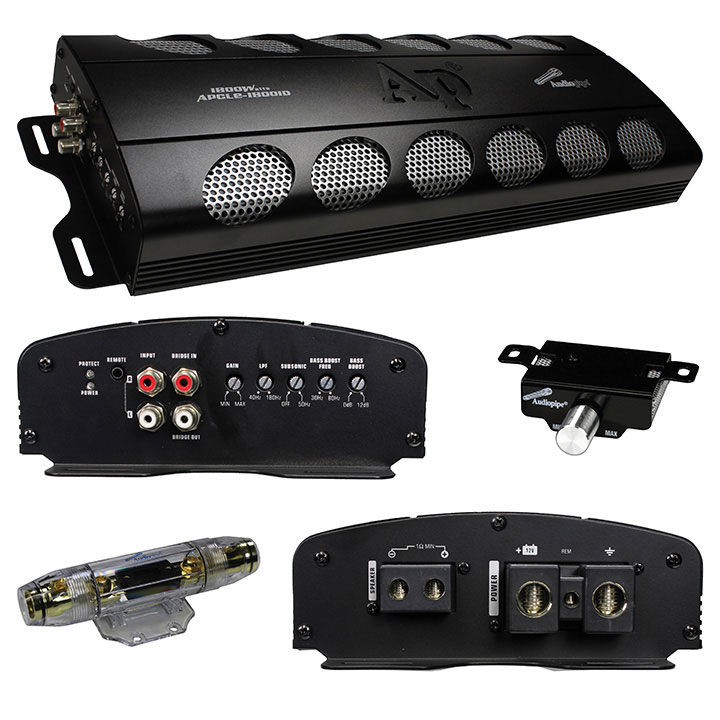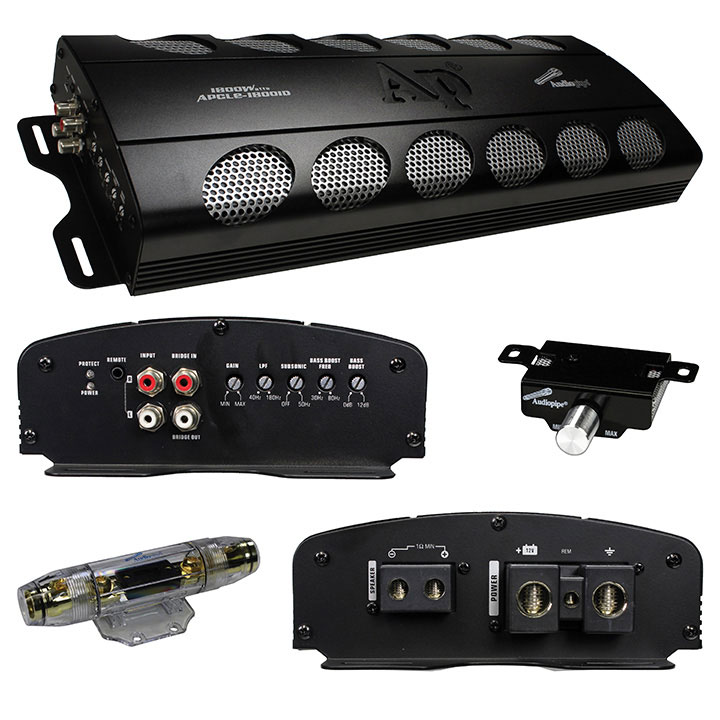Answer
Sep 09, 2024 - 10:50 AM
The amp draw of a 1500W Audiopipe APCLE18001D Class D amplifier depends on various factors such as the power supply voltage, load (impedance of the speakers), and how much power the amplifier is producing at any given moment.
However, we can estimate the amp draw based on the amplifier's power rating. Here's a rough calculation:
Key Factors:- Power Rating: 1500 watts
- Voltage: Most car audio systems operate on 12-14.4 volts DC (we'll use 14.4V for this estimate).
- Efficiency: Class D amplifiers are typically around 80-90% efficient.
To find the current (amp draw), we can use the formula:
Current (Amps)=Power (Watts)Voltage (Volts)×Efficiency\text{Current (Amps)} = \frac{\text{Power (Watts)}}{\text{Voltage (Volts)} \times \text{Efficiency}}Current (Amps)=Voltage (Volts)×EfficiencyPower (Watts)Assuming the amplifier is running at 80% efficiency and at 14.4 volts:
Amp Draw=1500W14.4V×0.80=1500W11.52≈130Amps\text{Amp Draw} = \frac{1500W}{14.4V \times 0.80} = \frac{1500W}{11.52} \approx 130 AmpsAmp Draw=14.4V×0.801500W=11.521500W≈130Amps Key Points:- Maximum Current Draw: At full 1500W output power and peak efficiency, the amplifier could draw around 130 amps.
- Real-World Usage: In typical use, you may not always push the amplifier to its full 1500W rating. The actual current draw will often be lower based on the volume, load impedance (e.g., 4 ohms, 2 ohms), and listening conditions.
- You’ll want to ensure your vehicle’s electrical system (alternator and battery) and wiring (like power cables and fuses) can handle the potential amp draw, especially under full load.
- It's advisable to use appropriately sized power cables, fuses, and possibly a capacitor to support the amp's power requirements.
If the amplifier is running at less than maximum output, the amp draw will be significantly lower than 130 amps.





Add New Comment